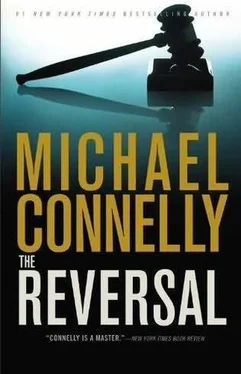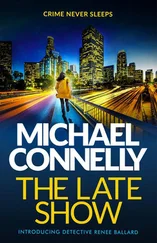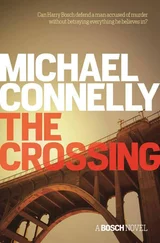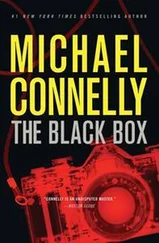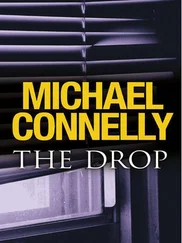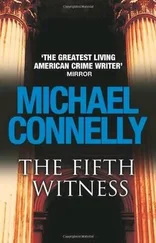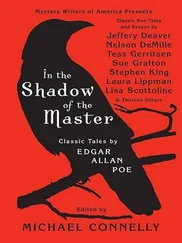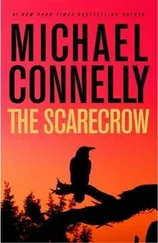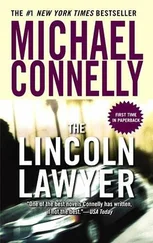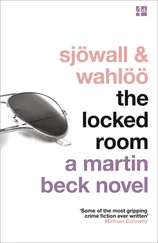“ ‘I am her mother,’ ” Bosch read. “ ‘She was my daughter… until she was taken away from me.’ ”
Monday, April 5, 1:45 P.M .
The reading of Regina Landy’s testimony from the first trial took us right up to lunch. The testimony was needed to establish who the victim was and who had identified her. But without the incumbent emotion of a parent’s testimony, the reading by Bosch was largely procedural, and while the first witness of the day brought reason to be hopeful, the second witness was about as anticlimactic as a voice from the grave could possibly be. I imagined that Bosch’s reading of Regina Landy’s words was confusing to the jurors when they were not provided with any explanation for her absence from the trial of her daughter’s alleged killer.
The prosecution team had lunch at Duffy’s, which was close enough to the CCB to be convenient but far enough away that we wouldn’t have to worry about jurors finding the same place to eat. Nobody was ecstatic about the start of the trial but that was to be expected. I had planned the presentation of evidence like the unfolding of Scheherazade, the symphonic suite that starts slow and quiet and builds to an all-encompassing crescendo of sound and music and emotion.
The first day was about the proof of facts. I had to bring forward the body. I had to establish that there was a victim, that she had been taken from her home and later found dead and that she had been murdered. I had hit two of those facts with the first witnesses, and now the afternoon witness, the medical examiner, would complete the proof. The prosecution’s case would then shift toward the accused and the evidence that tied him to the crime. That would be when my case would really come to life.
Only Bosch and I came back from lunch. Maggie had gone over to the Checkers Hotel to spend the afternoon with our star witness, Sarah Ann Gleason. Bosch had gone up to Washington on Saturday and flown down with her Sunday morning. She wasn’t scheduled to testify until Wednesday morning but I had wanted her close and I had wanted Maggie to spend as much time as possible prepping her for her part in the trial. Maggie had already been up to Washington twice to spend time with her but I believed that any time they could spend together would continue to promote the bond I wanted them to have and the jury to see.
Maggie left us reluctantly. She was concerned that I would make a misstep in court without her there watching over me as my second. I assured her that I could handle the direct examination of a medical examiner and would call her if I ran into trouble. Little did I know how important this witness’s testimony would come to be.
The afternoon session got off to a late start while we waited ten minutes for a juror who did not return from lunch on time. Once the panel was assembled and returned to court, Judge Breitman lectured the jurors again on timeliness and ordered them to eat as a group for the remainder of the trial. She also ordered the courtroom deputy to escort them to lunch. This way no one would stray from the pack and no one would be late.
Finished with the lunch business, the judge gruffly ordered me to call my next witness. I nodded to Bosch and he headed to the witness room to retrieve David Eisenbach.
The judge grew impatient as we waited but it took Eisenbach a few minutes longer than most witnesses to make his way into the courtroom and to the witness stand. Eisenbach was seventy-nine years old and walked with a cane. He also carried a pillow with a handle on it, as if he were going to a USC football game at the Coliseum. After being sworn in he placed the pillow on the hard wood of the witness chair and then sat down.
“Dr. Eisenbach,” I began, “can you tell the jury what you do for a living?”
“Currently I am semiretired and derive an income from being an autopsy consultant. A gun for hire, you lawyers like to call it. I review autopsies for a living and then tell lawyers and juries what the medical examiner did right and did wrong.”
“And before you were semiretired, what did you do?”
“I was assistant medical examiner for the county of Los Angeles. Had that job for thirty years.”
“As such you conducted autopsies?”
“Yes, sir, I did. In thirty years I conducted over twenty thousand autopsies. That’s a lot of dead people.”
“That is a lot, Dr. Eisenbach. Do you remember them all?”
“Of course not. I remember a handful off the top of my head. The rest of them I would need my notes to remember.”
After receiving permission from the judge I approached the witness stand and put down a forty-page document.
“I draw your attention to the document I have placed before you. Can you identify it?”
“Yes, it’s an autopsy protocol dated February eighteenth, nineteen eighty-six. The deceased is listed as Melissa Theresa Landy. My name is also on it. It is one of mine.”
“Meaning you conducted the autopsy?”
“Yes, that is what I said.”
I followed this with a series of questions that established the autopsy procedures and the general health of the victim prior to death. Royce objected several times to what he termed leading questions. Few of these were sustained by the judge but that was not the point. Royce had adopted the tactic of attempting to get me out of rhythm by incessantly interrupting, whether such interruptions were valid or not.
Working around these interruptions, Eisenbach was able to testify that Melissa Landy was in perfect health until the moment of her violent death. He said she had not been sexually attacked in any determinable way. He said there was no indication of prior sexual activity-she was a virgin. He said the cause of her death was asphyxiation. He said the evidence of crushed bones in her neck and throat indicated she had been choked by a powerful force-a man’s single hand.
Using a laser pointer to mark locations on photographs of the body taken at autopsy, Eisenbach identified a bruise pattern on the victim’s neck that was indicative of a one-handed choke hold. With the laser point he delineated a thumb mark on the right side of the girl’s neck and the larger, four-finger mark on the left side.
“Doctor, did you make a determination of which hand the killer used to choke the victim to death?”
“Yes, it was quite simple to determine the killer had used the right hand to choke this girl to death.”
“Just one hand?”
“That is correct.”
“Was there any determination of how this was done? Had the girl been suspended while she was choked?”
“No, the injuries, particularly the crushed bones, indicated that the killer put his hand on her neck and pressed her against a surface that offered resistance.”
“Could that have been the seat of a vehicle?”
“Yes.”
“How about a man’s leg?”
Royce objected, saying the question called for pure speculation. The judge agreed and told me to move on.
“Doctor, you mentioned twenty thousand autopsies. I assume that many of these were homicides involving asphyxiation. Was it unusual to come across a case where only one hand was used to choke a victim to death?”
Royce objected again, this time saying the question asked for an answer outside the witness’s expertise. But the judge went my way.
“The man has conducted twenty thousand autopsies,” she said. “I’m inclined to think that gives him a lot of expertise. I’m going to allow the question.”
“You can answer, Doctor,” I said. “Was this unusual?”
“Not necessarily. Many homicides occur during struggles and other circumstances. I’ve seen it before. If one hand is otherwise occupied, the other must suffice. We are talking about a twelve-year-old girl who weighed ninety-one pounds. She could have been subdued with one hand if the killer needed the left hand for something else.”
Читать дальше
